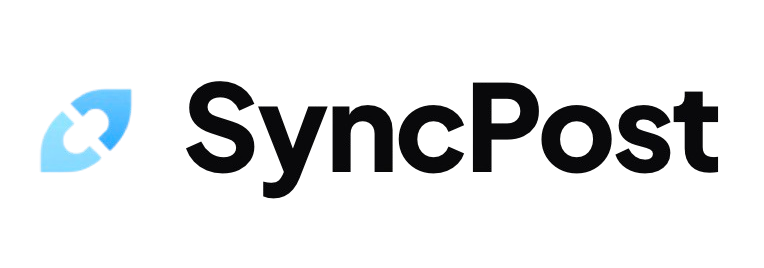
Why Content Sharing Matters
Your followers no longer stick to just one social media platform - they bounce between Instagram, TikTok, YouTube, and more throughout their day. Social media has grown from a single destination into multiple hangout spots where your audience spends their time.
Creating unique content for each platform can feel like running on a hamster wheel that never stops. You need to adjust your videos, photos, and text to fit each platform's rules and style. Between managing different posting schedules, following platform guidelines, and keeping your followers happy on each channel, it's easy to feel overwhelmed.
Smart content sharing helps you reach more people without burning yourself out. By tweaking and reusing your content across platforms, you can build a strong presence everywhere your audience hangs out while saving time and energy.
Platform Selection Strategy
Your success on social media starts with picking the right platforms where your target audience hangs out. The type of content you create should match what works best on each platform - for example, if you make beautiful product photos, Instagram might work better for you than Twitter.
You don't need to jump on every social platform that exists just because your competitors are there. Trying to maintain a presence everywhere often leads to burnt-out teams and mediocre content quality. Instead, you should focus on doing an excellent job on two or three platforms that matter most to your business.
By picking platforms that work well together, you can create content that serves multiple channels while reaching different segments of your audience. Looking at how your audience overlaps across platforms helps you decide where to focus your time and energy for the best results.
Content Adaptation Techniques
Each social media platform and website has its own special way of showing content to users. You need to adjust your message format, tone, and visuals to match what works best on each platform, from short videos on TikTok to professional articles on LinkedIn. Your brand voice should stay consistent across these platforms while adapting to their unique features.
Copying and pasting the same content across all your social media accounts might seem like a time-saver, but it actually hurts your results. When you post the exact same content everywhere, you miss out on the special features each platform offers and risk looking out of touch with your audience.
You can save time by planning your content themes weekly and then adjusting the format for each platform. Smart content planning lets you create variations of your message quickly while using the best features of each platform, such as Instagram's carousel posts or Twitter's thread format.

Automation Tools Overview
Automation tools help you share your content across multiple social media platforms with just a few clicks. These tools save you hours of manual work by posting your updates, articles, and images to different platforms at the best times for each audience.
Picking the right automation tool depends on which platforms you use most often and what you want to post. You should look at features like scheduling options and how many accounts you can connect. The tool's price and how easy it is to use should also guide your choice.
While automation makes posting easier, you should still add personal touches to your content. Your followers can tell the difference between purely automated posts and ones that show your personality, so mix in some real-time engagement with your scheduled content.
Cross Platform Analytics
Tracking your content performance across different social media platforms helps you understand where your message connects best with your audience. You can spot which posts get the most engagement by looking at likes, shares, and comments on each platform separately. These insights show you exactly what type of content your followers prefer on Facebook versus Instagram or LinkedIn.
Many people make the mistake of looking at their analytics only once a month, which means they miss quick changes in audience behavior. Another common error is comparing engagement numbers between different platforms directly, without considering that each platform has its own typical engagement rates.
Using your analytics data helps you make smart choices about where and when to share your content. You can improve your results by posting your best-performing content types at the times when most of your audience is online.
Audience Growth Tactics
Building an engaged audience takes time and consistent effort across each platform you use. You need to post content that matches what your followers want to see and interact with them regularly through comments and messages.
Getting more followers doesn't automatically mean better results for your business. Real success comes from having people who actually care about your content and respond to it. Your small but engaged group of 100 followers will bring you more value than 10,000 followers who never interact with your posts.
You can grow your audience faster by sharing content between different social media platforms. When you post something that works well on one platform, adapt it slightly and share it on your other channels to reach more interested people.

Content Calendar Planning
A unified content calendar helps you manage posts across Instagram, LinkedIn, Twitter, and other social platforms from one central place. You can spot content gaps, ensure consistent messaging, and prevent overlapping posts that might compete for your audience's attention. Using a simple spreadsheet or project management tool makes it easy to track and adjust your content schedule as needed.
Your content calendar shouldn't lock you into a rigid posting schedule. Leave some room in your weekly plan for real-time engagement and trending topics that pop up unexpectedly.
Save time by creating content in batches for different platforms at once. You can adapt one main piece of content into various formats, like turning a blog post into social media updates, videos, and graphics.
Platform Specific Best Practices
Each social media platform offers unique features that shape how users interact with content on that platform. Your followers on Instagram expect visual stories and engaging reels, while your Twitter audience looks for quick, witty updates and meaningful conversations. Understanding these differences helps you create content that feels natural and performs better on each platform.
Posting the same content across all your social media accounts might save time, but it often falls flat with your audience. When you ignore platform-specific expectations, your content risks looking out of place and failing to connect with users who could become loyal followers.
You can stay true to your brand's personality while speaking each platform's language by adjusting your content format and delivery style. See how SyncPost helps maintain platform authenticity while efficiently sharing content between Twitter and Bluesky, demonstrating effective platform-specific content sharing in action.
Crisis Management Protocol
Managing content issues across multiple platforms requires you to stay alert and respond quickly to problems. You need a central dashboard to track comments, messages, and feedback across all your social media accounts and website.
When users report inappropriate content, your first step is to temporarily hide or remove the content while you investigate. Technical issues like website downtime can frustrate your customers and need immediate attention from your tech team. Bad reviews or negative comments need a calm, professional response that shows you care about fixing the problem.
Your crisis management plan should include clear steps for each team member to follow during different types of emergencies. Having backup content ready and testing your response procedures regularly will help you handle problems smoothly.
Common Questions About Sharing
How often should I post on different platforms?
Each platform has its sweet spot for posting frequency. Here's what works best:
- Instagram: 4-7 posts per week
- Facebook: 3-5 posts per week
- LinkedIn: 2-5 posts per week
- Twitter: 3-5 tweets per day
- TikTok: 1-3 videos per day
How do I keep my content consistent across platforms?
Create a content calendar that maps out your posts for each platform.
Use the same core message but adapt the format to fit each platform's style - for example, turn a blog post into short video clips for TikTok and key points for Twitter.
Keep your brand voice and visual elements consistent, but adjust your content length and style to match each platform's audience preferences.
When are the best times to post?
The most effective posting times vary by platform:
- Instagram: Tuesday to Friday, 10 AM to 3 PM
- Facebook: Tuesday to Thursday, 9 AM to 2 PM
- LinkedIn: Tuesday to Thursday, 9 AM to 12 PM
- Twitter: Weekdays, 8 AM to 4 PM
- TikTok: Tuesday to Sunday, 6 PM to 9 PM
How should I handle negative feedback across platforms?
Always respond promptly and professionally to negative comments.
Create a standard response template, but personalize each reply to show you're listening and care about the feedback.
Take heated discussions private by asking users to direct message you with more details about their concerns.
How can I measure the ROI of my multi-platform presence?
Track these key metrics for each platform:
- Engagement rate (likes, comments, shares)
- Click-through rates on your links
- Follower growth rate
- Conversion rates from social traffic
- Cost per engagement
Use each platform's built-in analytics tools to monitor these metrics and adjust your strategy based on what works best.
